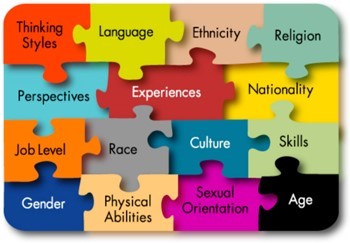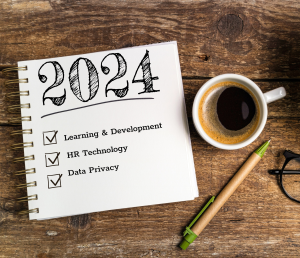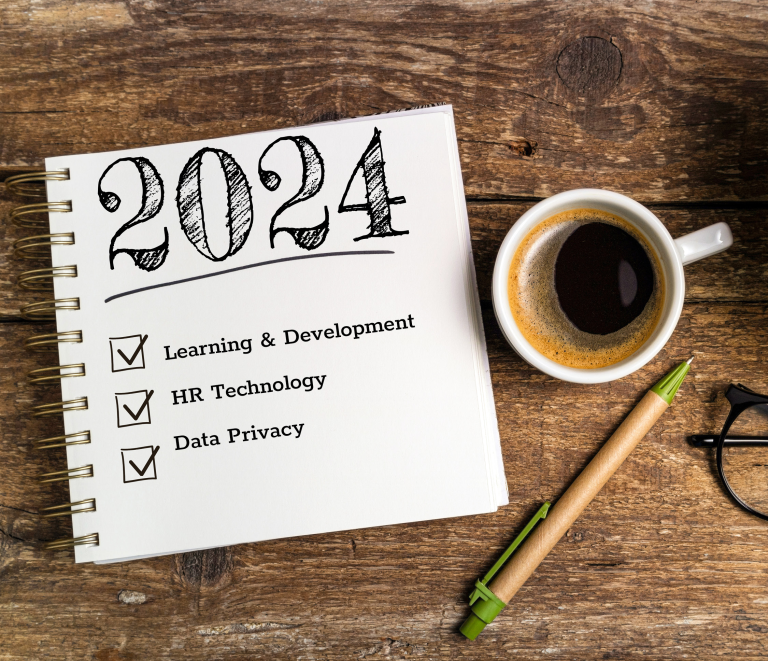Diversity and Inclusion in the workforce is not a new concept, but it is one that can be difficult to incorporate without proper guidance. Diversity is not just about ethnicity or color. It includes taking into consideration different genders, ages, abilities and disabilities, cultures, and more. Although some organizations have leaders that are of a generation that may not respect the idea of inclusion and diversity in the workplace, the decision should be company-wide and widely supported to help each employee thrive. If leadership demonstrates the importance of creating an atmosphere that positively incorporates a mission of diversity and inclusion, employee hiring processes and retention will exemplify that.
1. Establish a Clear Mission
The mission of the company is what concisely outlines the vision. It is the fundamental idea of which the company bases its practices and creates its strategic outcomes. Companies can begin the diversity and inclusion practices by first naming that in the mission. Therefore, all future decisions that the company makes will have to match this important factor outlined in the mission statement. If the company is looking to implement different Human Resources practices, wants to grow, reach out to a bigger audience of consumers, etc., the company must ask itself, how can I include perspectives and decisions that will include as many different individuals as possible.
The mission statement guides the actions of a company in every aspect. By including diversity and inclusion, this will impact every department from the top down. Although it is impossible to ensure that all groups of individuals are represented, those that are should be represented fairly. Those who may not be impacted by an individual department’s process should have some input on it that can be more inclusive. Those who are in leadership may not have the same perspective as the employees and clients they serve do. Therefore, it is important to have diverse leadership and to incorporate the perspectives on those they serve as much as possible.
2. Commitment from the Leadership Circle
Employee diversity and inclusion must start from the top down. When forming a board of directors (or in time electing new members to replace those who have resigned) it must be diverse so that decisions that impact employees can have a varying opinion. Although it is not appropriate to only hire a person who demonstrates a particular niche of individuals on the basis alone, it is important to emphasize the company’s strategy of inclusion and diversity and to gain perspective of what the potential board member brings to the table or how they feel about it.
The same goes for management. If the leadership does not reflect a diverse pool of individuals, it will be difficult for employees to relate to them. Employees will recognize the qualities that a leadership team will possess. If an employee does not feel as though they are appreciated at work, there is a higher chance that they will blame the lack of diversity in management. It will potentially lead to lawsuits based on discrimination, which no leadership board wants to face. By having different types of leadership representatives at the higher end of the employment chain, there will be more empathy and a greater sense of reflection in the work environment.
3. Emphasis on the Employee
One of the goals that most companies should have is a high retention rate. Employee turnover is expensive and can also damage the reputation of the company and its practices. This starts from the very beginning. As human resources and management begin interviewing employees, the same process that electing board members should be put into place. Although you can’t hire someone based on the fact they represent a particular faction of people, or even hire them because they do, during the interview process it is important to make diversity and inclusion an important series of inquiry, to know where the future employee stands. If this is a concept that is strongly outlined in the mission statement, interview questions can be based on this matter and the potential employee can state their views and ideas. If their response does not align with the company’s mission, they do not need to be hired for the position.
Once an employee is hired, it is important that they feel part of a team environment. By having meetings that discuss aspects of the mission statement and potential growth options, it is important to have employee’s opinions listened to. If the workforce is diverse, the ideas will be as well. Individuals who possess different characteristics or skill abilities will have a perspective that others may not have. With their insights being incorporated, solutions and decisions will also reflect this, and it may reach a stronger consumer base. Also, the retention of employees will increase because they feel as though they are nurtured and listened to by management.
4. Ensuring an Inclusive Work Environment
It is one thing to state that a workplace is diverse and inclusive, it is another to see it first hand in the work environment. If the environment is not conducive to all individuals, employees and clients will notice. A fantastically skilled employee could be wheelchair dependent. If management is compliant with all ADA requirements that are one thing. However, if different pieces of furniture, bathroom amenities, and advertising do not accommodate these employees correctly, it will provide an opportunity for grievance. The same goes for advertisements on the wall. If all advertisements and posters do not reflect the nature of the environment, employees will notice.
The outlying appearance of the worksite doesn’t always need to demonstrate diversity and inclusion. Sometimes, it is how the company’s policies play out. For example, are the benefits that are given to women and not men? Are there holidays that are provided and others that represent cultural diversity ignored? Are raises and promotions seemingly given to a “certain type of person” rather than skill and seniority? Sometimes the company’s policies are the tell-tale sign on their level of inclusion and diversity. Ensuring that these reflect the needs of the social environment eliminates bias and potential clashing between employees and management. Always ask for employee input.

5. Making Diversity and Inclusion Processes Ongoing
Some companies will change a few posters or style of advertising. They will install a couple of handicap accessible amenities. They will hire a few persons of ethnic heritage. The job is then complete, correct? Wrong. The process of diversity and inclusion is an ongoing and continuous process that can be further developed and built upon. Again, by incorporating it into the mission statement and ensuring that the leadership has the same ideals concerning this matter, it will make this process more sustainable.
A company must stay in the loop and have their thumb on the cultural shifts that are taking place. Knowledge of shifts in the social norms and incorporating in house solutions can be difficult. But by holding team meetings or having teams brainstorm how this can be solved or represented in the workplace, will allow each employee to have a stake in the matter.
Allowing for diversity and inclusion practices in the workplace will create a more positive and enriching environment that will bring lots of perspectives and a great reputation within the community. If this matter is ignored, opportunities for grievance and potential lawsuits can ensue. The best way to ensure that these practices take place is the incorporate it in the mission, to have leadership that represents a wide range of individuals, to let employees have a stake in the decision making or brainstorming process, and to create a physical environment that exemplifies these practices. The ongoing process of ensuring inclusion and diversity must take a continual approach, be modified, and ensure that it meets the needs of the ever-changing social practices taking place outside of the office walls.
You might also be interested in:
Diversity and Inclusion ZOOM Webinar by Puzzle HR
Don’t miss out on key insights from industry leaders about Diversity and Inclusion.
















